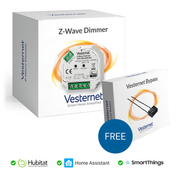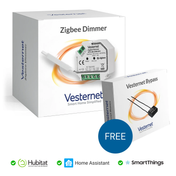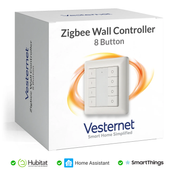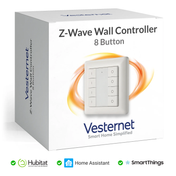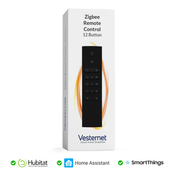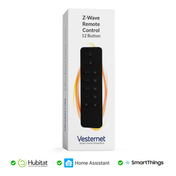
Z-Wave, Zigbee & WiFi Sirens & Doorbells are a crucial element to any safety and security monitoring that you wish your Smart Home system to do.
While TTS (Text-To-Speech) announcments and notifications to your phone, tablet or watch all play their part, nothing beats the loud blaring of a siren or the flashing of a strobe light to convey the sense of urgency in emergency situations.
Manufacturers of Z-Wave, Zigbee & WiFi Sirens & Doorbells typically produce them in two formats, those that are simply standalone Siren devices in their own right and those where the siren functionality is available as an independently controllable secondary feature of another device.
Choosing the right Siren & Doorbell between manufacturers can be a little difficult as some will offer more advanced capabilities and others will offer simpler functionality, often at a cheaper price. Remember that you can mix and match manufacturers on the same system as they are all compatible - more information can be found in our Understanding Compatibility guide.
This guide explains what the different types of device are used for and gives extra details to help select between the manufacturers.
One thing to bear mind is that in terms of Doorbells, this guide discusses the "noise making" part only as opposed to any associated push button. For information on those be sure to check out our Choosing Smart Home Remote Controls & Wall Controllers guide.
Standalone or Secondary
Firstly, all Sirens & Doorbells are "actuators" - meaning that they physically "do something". More information on actuators is available in our Getting Started guide.
Unlike other actuators though, Sirens & Doorbells don't usually have any local control - there's not much point since the main function is to alert in response to an event in the Smart Home system, as opposed to being something that you need to physically control manually!
A "Standalone" Siren or Doorbell is exactly what you'd expect - a device where its only purpose is to operate as one.
On the other hand, a "Secondary" device is one where the functionality is an additional feature rather than its main purpose. For example this could be a Smoke Sensor, Heat Sensor or Flood Sensor that has an integrated siren / sounder feature. The crucial point here though is that the function has to be exposed for external control and not just be limited to alerting in the event of the primary purpose of the device being triggered.
Standalone - Z-Wave | Zigbee | WiFi
Standalone Sirens & Doorbells are useful for situations where you explicitly need a dedicated device, for example for a Smart Home based alarm / security system or as a "whole floor" alerting device.
Standalone Sirens & Doorbells - things to think about:
- Siren Type - Is it a single sound or is it configurable? Better still, can different sounds be triggered independently? For example a simple "ding dong" when somebody pushes the doorbell button, a "blip" when somebody opens an external door and a full-on klaxon cacophany in response to an intrusion when the Smart Home alarm system is set to away mode.
- Siren Volume - The louder the better, especially if it's an external Siren. It's pretty pointless if the siren is no louder than your microwave beeping at the end of its cooking time! Aim for something higher than 85db at 3m distance if possible.
- Visual Alerts - Do you need a visual alert such as a strobing LED too? Plain white or coloured?
- Battery Powered or Mains Powered - Battery powered makes for an easier installation, but mains powered means never having to worry about replacing batteries or batteries failing at an inconvenient moment. Also consider that mains powered usually means the device will participate in any repeating / extending of a Z-Wave / Zigbee network.
- Location - Indoors or Outdoors? Obviously if you require a siren for outdoors then you'll need to ensure that it's weatherproof! Equally so, while a battery powered device will be easier to install, do you really want to be getting the ladder out every time the batteries need replacing?
- Information - More information about these issues and other things to consider is available in our Smart Home Security and Smart Home Emergency guides.
Secondary - Z-Wave | Zigbee | WiFi
Secondary Sirens & Doorbells are useful for situations where you perhaps need other Sensor type devices such as Smoke, Heat or Flood. Choosing one of those that incorporates an integrated but individually controllable siren aspect is a great idea for secondary or per-room alerting purposes.
Secondary Sirens & Doorbells - things to think about:
- Siren Type - Usually these are only a single sound type since the primary purpose of the siren is to alert of sensor triggers.
- Siren Volume - These aren't usually as loud as dedicated Sirens & Doorbells. That's not necessarily a bad thing as it can make them more suitable for per-room alerting where you probably don't want a 120db klaxon going off above your bed for example!
- Visual Alerts - Do you need a visual alert such as a strobing LED too? Plain white or coloured?
- Battery Powered or Mains Powered - Battery powered makes for an easier installation, but mains powered means never having to worry about replacing batteries or batteries failing at an inconvenient moment. Also consider that mains powered usually means the device will participate in any repeating / extending of a Z-Wave / Zigbee network.
- Location - Indoors or Outdoors? Obviously if you require a siren for outdoors then you'll need to ensure that it's weatherproof! Equally so, while a battery powered device will be easier to install, do you really want to be getting the ladder out every time the batteries need replacing?
- Independent Control - Remember that the most important feature is that the siren aspect must specifically allow independent control!
- Information - More information about these issues and other things to consider is available in our Smart Home Security and Smart Home Emergency guides.
Getting Help and Advice
Hopefully this guide has helped clarify what options are available, what the different types of Z-Wave, Zigbee & WiFi Sirens & Doorbells do, and shown the comparison between manufacturers. If you need any further help or advice, contact Vesternet and we will do our best to answer all your questions.

